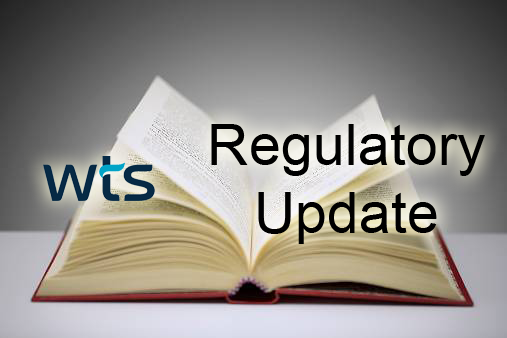USEPA recently made notification of a future regulatory change in the management of “RCRA empty” containers by filing A Notice of Proposed Rulemaking. A virtual Public Meeting was held on November 1 and comments from affected and interested parties were accepted until November 22 of this year. A review period for comments is then set at 90 days. Note that any changes in regulations like this typically take at least a year to take place after the review period and that not all or any of the proposed changes could or will take place. It should be noted that at the Virtual Public Meeting, strenuous objections from interested stakeholders were raised. A major consideration in this rule is that the agency believes that non-RCRA Empty Containers are routinely being shipped by Hazardous Waste Generators to reconditioning facilities, resulting in the mis-management of RCRA regulated Hazardous Wastes. The proposed rule focuses on containers that are typically utilized in our industry – Poly and steel Totes, 55 gallon and smaller steel, plastic and fiber drums and pails.
Some background and proposed changes to the current regulation follow:
Background: USEPA conducted a study of the Drum Reconditing industry. After doing so ,they compiled a Damage Case Report (Drum Reconditioner Damage Case Report (epa.gov)).
From USEPA: “The report’s findings indicate an estimated national drum reconditioning universe of 181 facilities with approximately 40 million total drums being processed each year. The data also indicate that approximately 35% of drums are reconditioned using burn-off ovens, and the remaining 65% are reconditioned through washing methods. Of the total 181 drum reconditioning facilities identified by EPA, 86 had one or more reported damage cases, representing 47.5% of the industry. Damages include fires; drum explosions; hazardous waste spills; improper storage of drums; employee injuries; air, water, or soil contamination; and various combinations of these incidents.”
As a result of what the agency is classifying as “systematic non-compliance”, they are proposing in this rule a number of increased regulatory requirements.
A synopsis of the proposed changes:
- Increasing compliance assistance and enforcement of the empty container regulations at used drum generators
- Increased inspections, compliance assistance, or voluntary standards and best practices at drum reconditioners to address drum furnace emissions and wastewater discharge/handling issues
- Development of Standard Operating Procedures (SOPs) at used drum generators, transporters, and drum reconditioners
- Generators & Transporters
- Reduce “1-inch” regulatory limit
- Require rinsing for all containers to be deemed “RCRA empty”
- Require structural integrity evaluations prior to shipment
- Add/strengthen regulatory language for practices for emptying drums and requiring SOPs for drum emptying including distinguishing between pourable and non-pourable waste, certification of empty drums, employee training, and tracking/records for empty drums shipments
- Require drum labeling/documentation for drum residues (Existing Department of Transportation labeling/documentation requirements continue to apply – Addition of RCRA requirements)
- Reconditioners
- Add regulatory provisions/permit exemption criteria for drum reconditioners such as SOPs for empty drum screening, designation of non-RCRA empty container storage areas, rejected shipment procedures, discrepancy reports, and container management plans
- Require Waste Analysis Plans (WAP) for characterizing “RCRA empty” container rinsate
- Require inspections and inventory of drums
- Require financial assurance
- Add regulatory provisions for air emissions from drum furnaces (e.g., emission controls, RCRA permit for hazardous waste residues)
- Add regulatory provisions related to water discharges (e.g., rinsate management in tanks and containers not land-base units, limit surface impoundment discharges to drums with non-hazardous residues, prohibit sewer discharge of rinsate from drums with hazardous waste residues)
- Require contingency plans and employee training for emergencies
- Require RCRA Subtitle C permit
- End-of-Life Management Facilities
- Limit “RCRA empty” provisions to containers sent to drum reconditioners only
- Require totally empty containers prior to scrap recycling or disposal
- Require containers with hazardous waste residues to meet hazardous debris alternative treatment standards prior to land disposal
These proposed changes are robust and all-encompassing and would certainly significantly impact the manner in which “RCRA Empty” containers are currently managed. It is our opinion that not all or many of the proposed changes will ultimately end up in a final rule but we would also stress that increased regulatory oversight in this area is very likely going to occur in the future. We will continue to monitor this activity and report on the same. As an aside follows a link to the 181 Drum Reconditioning facilities that USEPA identified. The listing also does contain info on if there is “damage” identified at the listed location: Appendix B – Drum Reconditioner Facility Comprehensive List Sorted by State (epa.gov)
If you have any questions on this matter, please do not hesitate to reach out to your WTS representative.

